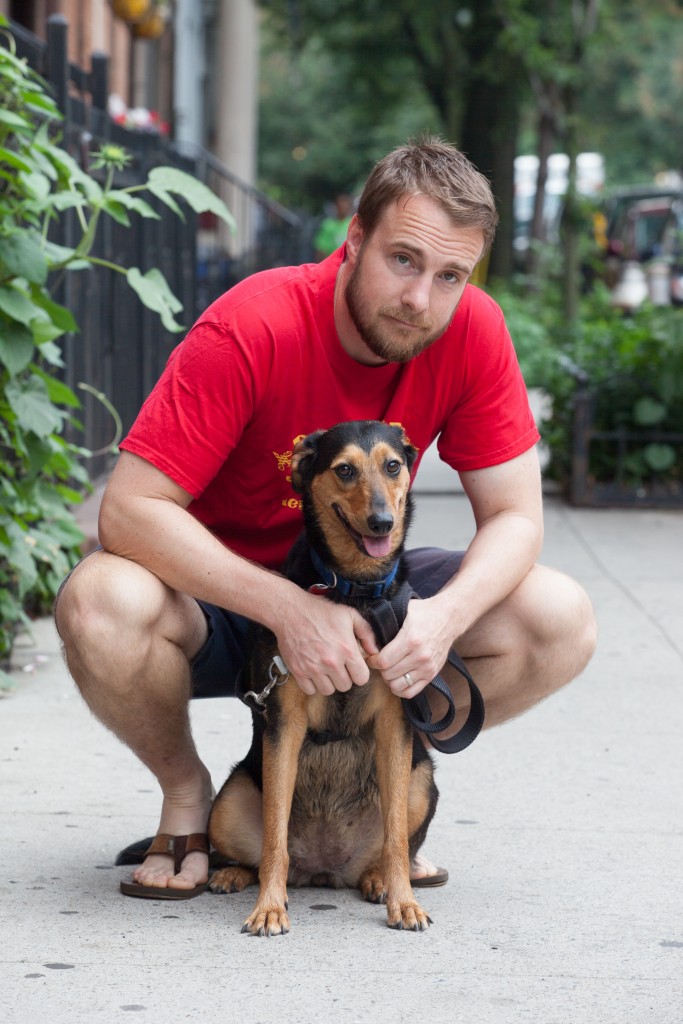Well, it’s been decided that my daughter will indeed get a dog. Which means we’ll all get a dog, since we all know the idea that the dog will be “her responsibility” is a fiction at any age, but certainly at six. So now it’s just a matter of when and what.
I find that big life decisions are best made in two phases. Take, for instance, having a child in the first place. This is the purpose of gestation. You first decide you want to have a child, and then you wait a while — however long it takes to get pregnant and then grow and deliver a baby, or to adopt or use a surrogate or what have you. The waiting period is strategic. It’s the world’s way of helping you come to terms with the reality of your decision and start to grasp its full implications. I remember in the movie Baby Boom when the Diane Keaton character is suddenly, unexpectedly given the baby of a distant, deceased relative, and her life falls into complete chaos. Of course, even if you had months or years warning, having a child leads to complete chaos. But less, I think.
And so I’m imagining that anticipating the having of a dog will help prepare the way for the real thing. I’ve noticed myself now thinking things like, “I guess now would be a fine time to walk the dog if we had the dog,” and “That looks like a sturdy brand of carpet cleaner for when we have the dog.” This is like how world-class runners prepare for a race by visualizing the route over and over again in their heads. I’m picturing the carpet stains.
But at the same time, I’m also making excuses. Especially when it comes to when we actually cross that threshold from fiction into reality. We can’t get a dog now, I think. It’s summer. It’s too hot. And we already have vacation plans that are dog-less. That beach rental doesn’t allow dogs, and it would be negligent to leave it alone so soon. Which leaves the fall. But that’s back to school, hectic enough. And piles of leaves mean ticks, right? Winter? No way! Too cold, wet paws, plus I hear that salt on the sidewalks really hurts them. So spring it is! It seems far enough away to not be anytime soon.
As for the kind of dog, this is a matter of much contention. First there’s age. Do we want a puppy or a more seasoned, broken in year-or-so-old dog? From what I gather, each has distinct advantages. Older dogs are already mellowed out and, apparently, sometimes come housebroken. Hence no stains, or fewer anyway. But what the hell is the point of getting a dog if you don’t get a puppy? Sure, they’re difficult, but they’re also adorable as all get out and they’re cuddly and they smell good. My six-year-old has stopped smelling good. It would be nice to have something good smelling in the house. At least until it stains the carpet.
Lastly, we’re up in the air as to breed. Me, I want a mutt from the pound. That seems to me the most socially responsible option as well as the best statistical bet, combining the best of several breeds into one better-than-average result. My daughter wants an Irish Wolf Hound. This, in case you didn’t know, it a dog the size of a small convertible. It is literally bigger than her bedroom. And it is not cuddly, though it doesn’t require much exercise which is a definite plus. But to me, Wolf Hounds look sort of the dogs that might accompany the grim reaper and I worry that in the middle of the night, catching its passing shadow might cause me to have a heart attack. I don’t want to have a heart attack.
Meanwhile my partner wants a Bernedoodle. This is a Bernese Mountain Dog crossed with a Poodle. They are absolutely as cute and cuddly as they are expensive, which is to say very. Plus there’s a not small part of me that worries that if I start by giving into a designer dog, next thing my partner will want a designer handbag or something, and we can’t really afford that either.
All of which leaves us, I suppose, in the category of “Dog Aspirational, With Lingering Doubts.” Suggestions welcome.

